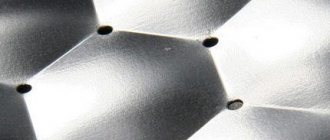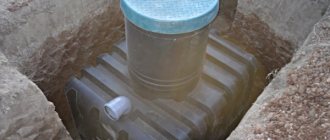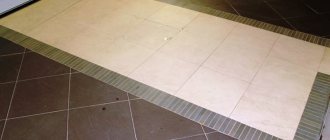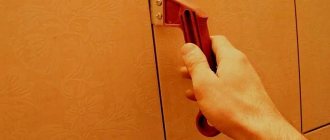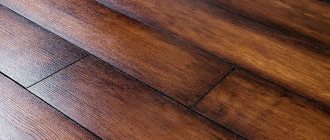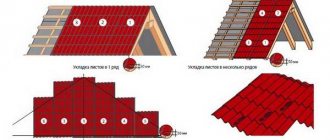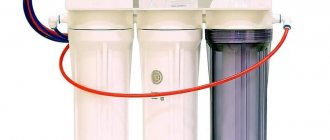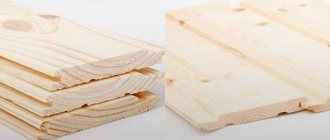Pool care consists of a large number of procedures to ensure the safety of the bowl, the functionality of additional equipment and the purity of the water.
Various techniques are used, but the simplest methods of protection are often the most effective. One of them is a pool cover to keep debris out of the water and also to retain heat.
The technique is very simple, it never fails or fails. We will tell you more about whether and how to cover a pool located on the street or in a dacha below.
Should an outdoor pool be closed?
Pools located on the street can be closed and thereby solve several issues at once:
- protecting water from dust, small debris or insects;
- cut-off from sedimentary moisture during rain;
- stopping the evaporation of water when the bowl is not in use to slow down its cooling.
The need for protection itself is not in doubt; only ways to implement it are discussed. The bowl is covered for different purposes depending on the time of day.
If during the day heating of water from the sun’s rays is added to the main list of tasks (with the help of special floating solar blankets), then at night the task is the opposite - it is necessary to limit evaporation so as not to lose thermal energy.
Roof installation
If the pool is planned to be installed in a separate room, then the subsequent steps are the same as in construction. The walls are built and covered with a roof. Here you can give free rein to your imagination, for example, make transparent walls or ceiling.
Pool roof installation
You can cover the pond with a ready-made arched structure. The basis for this design is usually an aluminum frame, and the walls are made of dense transparent plastic. You can assemble such a canopy with your own hands if you strictly follow the instructions.
What types of shelters are there?
There are several types of pool covers:
- awning;
- cover;
- solar coating;
- trampoline covering;
- roller protection;
- canopy;
- dome;
- pavilion;
- permanent building.
Protection options are listed in order of increasing complexity of construction and installation. Some of them are structures that require full-fledged and expensive construction. Others are simply canvases of various types of film, laid directly on the water or suspended on the sides.
Useful tips
The experience of owners and specialists in the installation and maintenance of outdoor swimming pools allows us to determine the basic rules that are relevant for stationary and frame structures:
- It is recommended to cover the mothballed pool with awnings made of durable materials (tarpaulin, PVC film, etc.).
- The use of homemade metal shields and wooden frames is irrational, especially on small bodies of water.
- Preservation must be carried out before the first frost.
Preventative work before the cold season helps prevent the destruction of the main structure and is aimed at protecting materials from the formation of mold and mildew.
What is the best way to cover the top of the bowl?
All methods of protection are used for a specific purpose . As a rule, the pool is covered precisely to solve this particular problem, which is too obvious and bothers users.
From garbage
Small debris, leaves, insects and dust are the companions of any outdoor pool. They float on the surface and settle to the bottom, forcing you to constantly vacuum the bowl and clean the surface of the water with a net. Shelter allows you to get rid of this problem, at least for the time it is installed.
Options for the most popular protection methods:
Tent. This is a canvas or hard covering installed above the water itself and secured to the sides of the bowl.
Forms a continuous barrier to all external pollutants. The main disadvantage of the awning is that installation is done manually and requires at least one assistant.- Canopy. This is an extensive group of accessories and structures that protect the pool from the wind and all the components it can bring (dust, debris, other objects).
There are open and closed canopies, stationary and folding. The main problem is the need to install and maintain the structure, which is not able to completely stop external threats - a certain amount of garbage still ends up in the water, and the canopies do not stop insects at all. - Dome. This structure is practically no different from a canopy, but creates greater coverage of the bowl. The degree of cut-off of external components is deeper, especially from rainwater.
- Pavilion. This structure most completely covers the bowl and is capable of covering it entirely. The pavilion has no less disadvantages than advantages - along with maximum protection, the pavilion can create an uncomfortable microclimate inside (like panic), the transparent canvas collects condensation, construction or installation requires significant effort and expense. In addition, the cost of the pavilion is very high, which significantly limits their use.
Despite all the pros and cons, any pool cover can protect from dust and debris.
To warm up the water
Warming up the water can only be provided by one type of shelter - a solar blanket . This is a canvas made of two (or more) layers of film with small cavities that receive thermal energy from the sun and release it to water. The bubbles form a greenhouse effect, accumulating heat, which is immediately transferred to the water.
Such a blanket is not able to completely solve the heating problem, especially for large-volume bowls, but it can reduce the load on the main heater and reduce heat loss.
The main disadvantage of a solar blanket is its inconsistent operation - it is useless at night, and in cloudy weather it can only perform its functions when deployed.
Manufacturers claim that the heating sheet can raise the temperature of the water in the pool by 18° (with a film thickness of 16 mm). However, these statements must be understood correctly - the effectiveness of the film depends on many external factors (weather, air temperature, volume of water, etc.).
This article will tell you what a pool cover film is and how to use it.
For the night
At night, pools are covered to protect them from foreign components (dust and debris, rainwater), as well as to prevent water evaporation.
This is a process that is accompanied by strong cooling, which is undesirable and even unacceptable.
The most effective are dense methods of protection - awnings, blankets and other types of fabrics that are in direct contact with water .
Structures that form a protective cocoon around the bowl (canopies, domes or pavilions) are ineffective against evaporation, since they are not able to stop the physical process.
Penetrating waterproofing
MasterSeal 501
A ready-to-use dry mixture designed to prevent water seepage from swimming pools and other concrete hydraulic structures and structures. Apply to the prepared concrete surface in two layers. The total material consumption for 2 layers is 1.5-2 kg/m². The price is for 1 bag of 30 kg.
SikaSeal 210 Migrating
A one-component waterproofing mixture containing migrating crystallizing additives that increase the water resistance of concrete. It is used to protect concrete structures from the effects of water under negative and excess pressure in water tanks, swimming pools, baths, underground structures, basements, and waterproofing layers. Resistant to low temperatures. Suitable for manual and mechanized application. The price is for 1 bag of 20 kg.
Smartscreen HC31 Pt
A ready-to-use, cement-based dry mixture designed to eliminate water seepage through concrete structures. The material is recommended for waterproofing pools, tanks and other concrete structures from the inside. Apply to prepared concrete surface. Environmentally friendly. Complies with current hygiene standards. Consumption is 1.6 kg/m² when applied in two layers. The price is for 1 bag of 25 kg.
Where and approximately at what cost can I buy it?
Pool covers can be purchased at specialized stores that sell accessories. The most convenient option is to use online stores, where they offer the widest range and you can choose any type of covering without leaving your home. Prices for protective sheets depend on their type, size and other features.
For example, awnings cost 500-800 rubles. (per m2), solar blankets are in approximately the same price range. The cost of canopies or pavilions is much higher and starts from 5,000 rubles. (for small mobile folding models).
Pavilion type covers
The pavilion-type pool cover NIVOVAS (Hungary) is an ideal solution for an outdoor pool. The structure of the pavilions is made of rigid aluminum profiles with polycarbonate glazing, capable of withstanding heavy weight and storm loads. The pool pavilion consists of sections that move along individual guides. The pavilion type of pool cover is the most functional type, allowing you to extend the use of the pool during the off-season period.
Video - Pavilion-type protective covers
What can you make with your own hands?
Any type of protective accessories can be made:
- awning;
- canopy;
- dome;
- pavilion.
Making shelters is only advisable if the cost of factory products is too high. For example, buying or making an awning yourself does not differ in terms of costs, but in terms of time spent, purchasing noticeably wins.
The situation changes if the pavilion is made with your own hands - at prices of about 300-400 thousand rubles, it is much more profitable to make the structure with your own hands .
The easiest option is to make an awning. Typically, such work is performed when canvases of the required shape or size are not available for sale.
Tools and materials
You need to prepare:
- vinyl or polypropylene film;
- welding device or powerful construction hair dryer;
- tools for measuring and cutting film (ruler or tape measure, scissors, shoe knife);
- nylon cables for fastening the awning.
Manufacturing process
Procedure:
Measuring the film, cutting the canvas to the shape of a bowl. First you have to weld a whole piece of fabric, from which you then cut out an awning with an allowance at the edges of about 20-30 cm.- The edges of the film are folded and welded. For tension models, metal inserts are sometimes used to make the edges rigid and retain their shape.
- Solder loops to secure the cables. Fasten the tension elements, check the conformity of shape and size.
During the manufacturing process, various additional operations are possible if the awning has specific parts or accessories (holes, valves, pockets). You can learn how to make a pool cover with your own hands here.
Roll waterproofing
Sikaplan WP 3100-15R
Reinforced waterproofing membrane based on plasticized polyvinyl chloride (PVC). Designed for waterproofing swimming pools. It has high strength, elasticity, stability of linear dimensions. Resistant to aging, algae development, chlorinated water, water at temperatures up to +30℃, and UV radiation. Can be used on weak substrates with a cohesive peel strength of less than 1.5 MPa. Suitable for laying on damp or wet substrates. The price is for 1 roll.
Product installation procedure
The procedure for installing protective covers should be familiar to every pool owner.
Awning
Installing an awning is the most labor-intensive procedure. Most of the paintings have to be placed manually, which requires the participation of one or two assistants.
Procedure:
- the canvas is laid from the end of the bowl (or from one edge if it is round);
- two people take hold of the edge of the canvas from different sides of the bowl and simultaneously pull it, trying not to make folds or distortions;
- when the entire area is covered, the cover is leveled again and secured with cables.
Sometimes the participation of a third person is required to straighten the canvas and prevent it from overturning the sides of the frame pool.
Dome
The dome is installed in accordance with the instructions. As a rule, folding models are installed in the following order:
- The folded frame is placed in the right place.
- The frame elements are straightened and moved into working position. It is fixed using special elements.
- If the canvas is installed separately, it is laid and secured.
Installing a folding canopy is no more difficult than installing a camping tent. The main thing is to act carefully and not damage the transparent film.
Pavilion
The pavilion is a permanent structure . In order to cover the pool, you need to move the movable sections so that they hide the entire area of the bowl.
This is a simple procedure, and on large structures it is also automated - when you press a button, the sections are moved using servos and stop at specified positions.
Polymer waterproofing
Purtop 1000
A two-component composition of resin, pure polyurea and fillers, designed for waterproofing swimming pools and hydraulic tanks. Apply by high pressure spray (using a two-component pump). Forms a continuous waterproofing coating that adapts to bases of different geometric shapes. Can be applied to various surfaces (concrete, metal, etc.). Does not contain solvents. Provides instant waterproofing (in 1 minute) and readiness for light foot traffic (in 5-10 minutes). It has excellent tensile and tear strength, high static and dynamic crack bridging ability. Supplied in metal barrels. The price is for a set of components A+B (445 kg).
Sikagard PoolCoat
A one-component water-dispersed color coating based on acrylic resin with high resistance to water. Used as a protective coating for concrete tanks, weather-exposed concrete surfaces, cement-mortared surfaces, fiber cement panels and chlorinated rubber covers for public swimming pools where the water is treated only by chlorination. Meets the basic requirements of the KTV standard. . The price is for 1 bucket of 10 kg.
Popular manufacturers
When buying an awning, you should not chase a low price. Disappointment will set in after the first season. Having decided on the type of shelter, pay attention to the manufacturer. Blinds from Belgian, German and French manufacturers are characterized by high quality. Examples are brands: Vogt, Ocea, DEL.
Canadian canvas covers under the HTS Synthetics Ltd. brand have proven themselves well. Among those available in terms of price/quality ratio, products from BestWay and Intex are popular. Manufacturers offer awnings of different densities and sizes, covers, bedspreads.
If the budget for organizing a vacation spot is unlimited, go straight to VOEROKA or PoolTechnics. Professional specialists will install a pavilion that protects the pool from precipitation, wind and debris.
